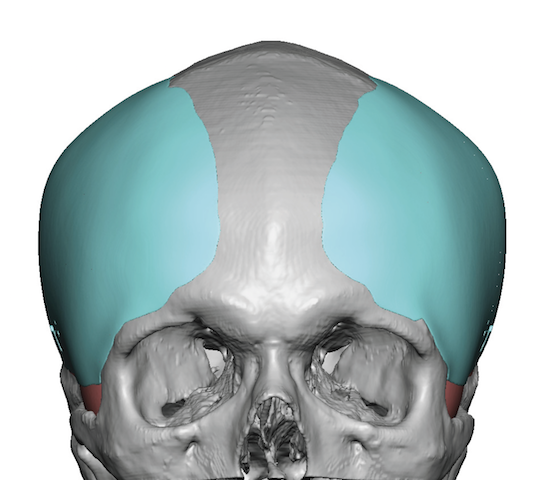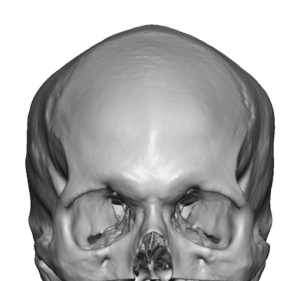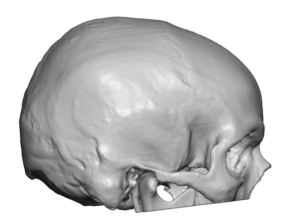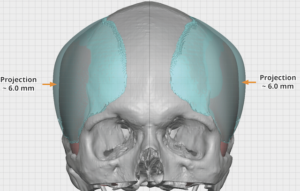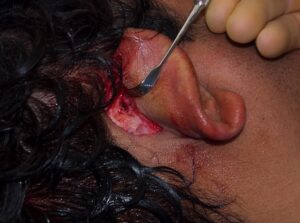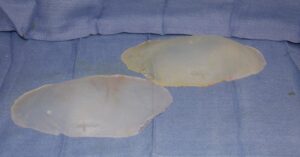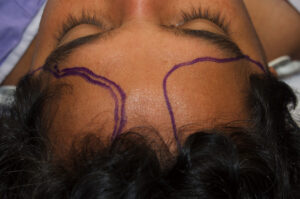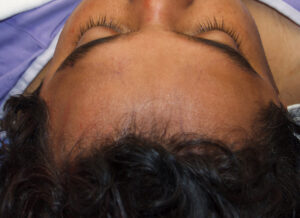Background: The appearance of the head can have multiple types of undesired aesthetic shapes. One of these unaesthetic types is that of the narrow head. This occurs when the head has a decreased bitemporal width as seen by a narrow or more pinched forehead that carries back along the side of head all the way to the back. This can be associated with a slightly longer front to back head length and a more peaked sagittal or midline crest across the top.
The best way to understand this head shape is to envision that the bony temporal line, the junction between the top and side of the head, has not grown outward enough. This creates a more slanted transition between the top and sides of the head, thus creating an overall more narrow head shape. This understanding is critical when planning how to treat it as the key is how to widen the entire temporal line from above the tail of the outer brow bone on the forehead all the way back to its posterior end on the back of the head.
Case Study: This male was bothered by a narrow forehead as well as inadequate width at the side of his head above the ears. While he had a full head of hair he only wore it that way to camouflage his narrow head shape. His 3D CT scan showed a sagittal crest with a sloped parasagittal skull shape onto and across the temporal lines.
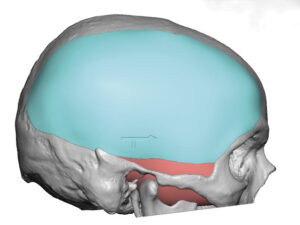
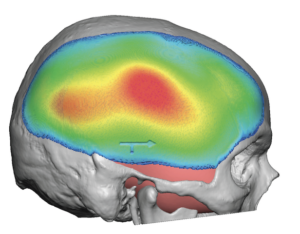

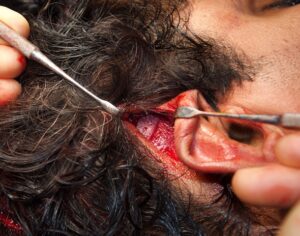
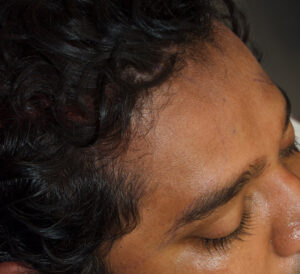
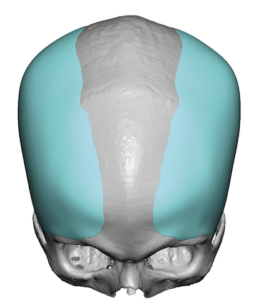
A circumferential head dressing and drains that exit out behind ear is applied at the conclusion surgery and removed the following day.
Case Highlights:
1) Narrow head shapes are associated with a more inward location of the bony temporal line that creates reduced widths of the forehead and the entire side of the head.
2) The complete treatment of a narrow head shape is a custom forehead-temporal implant that covers the entire surface areas that are involved.
3) Custom forehead-temporal implants are placed through a triangulation incisional technique that is virtually scarless.
Dr. Barry Eppley
Indianapolis, Indiana

